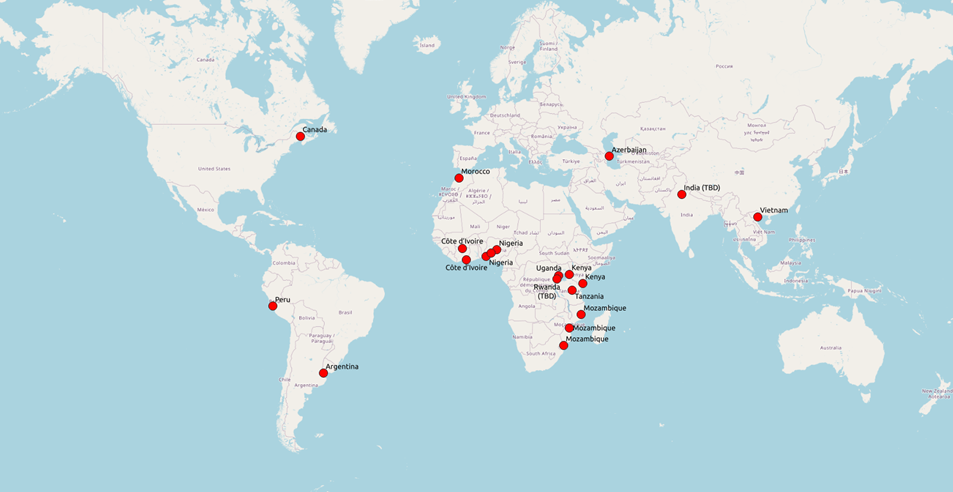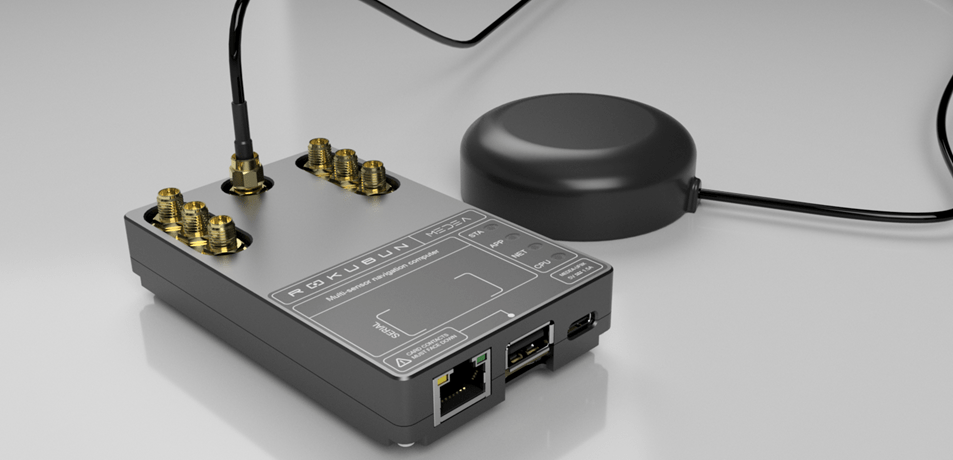
ESA, ICTP and Rokubun team up to improve GNSS data availability in remote areas through GSSC
One of the main problems for Earth ionosphere and troposphere monitoring using GNSS is the lack of coverage in remote areas such as deserts and oceans. Deploying high-end geodetic GNSS receivers in those areas involves risks and operating agencies are usually reluctant to do so in part due to its price tag, typically above 10k€, as well as the maintenance costs associated with the deployment difficulties.
However, several studies have proven that more cost-efficient GNSS hardware could be also successfully used in atmospheric monitoring (see for instance ESA’s Atmosfiller project). In this context, the ESA AMIC project (Affordable Monitoring of the Ionosphere and Observable Characterization; ESA’s TEC-EFW funded laboratory activity), led by Rokubun, aims to densify areas with a lack of GNSS receivers at a cost that greatly lowers deployment risks. This increased coverage will ultimately enable more accurate and robust monitoring of the atmosphere (for instance, ionospheric Vertical Total Electrical Content over these remote areas could be directly estimated with the AMIC data instead of being interpolated as it is currently done). A first network of 20 Rokubun MEDEA receivers will be deployed, in collaboration with the Abdus Salam International Center for Theoretical Physics (ICTP), in selected sites of Africa and South America. These receivers will continuously log GNSS navigation data and raw measurements (pseudoranges, carrier-phase, Doppler, C/N0, as compressed Hatanaka RINEX files). This data will then be uploaded to ESA’s GNSS Science Support Center Thematic Exploitation Platform – GSSC Now, for easy access, discovery, scientific analysis and long-term preservation.

The Rokubun MEDEA receiver is a GNSS computer that features a u-blox ZED-F9P dual-frequency GNSS chipset as well as an ARM based application processor, thus allowing it to embed any user software to process data (e.g. positioning filter, ionospheric scintillation tools, simple data logging, …). MEDEA is able to track the 4 major GNSS constellations (GPS, Galileo, Beidou and Glonass) at a maximum sampling rate of 20Hz.

The AMIC project is currently in the production stage of the MEDEA receivers. Today, the complete system is in the testing stage: the first data samples, gathered with an engineering model of the MEDEA receiver, are being ingested in GSSC Now for End-to-End validation. The production stage of the receivers will be carried out in Q1 2023, during Q2 2023 the receivers will be deployed to the final sites. In summer 2023 the first network samples will be available.
Among our future activities we are planning to offer tools such as Jupyter Notebooks and on-demand scientific tools in the form of GSSC Now Datalabs. This will help the scientific community to discover, access and analyze the data gathered in the AMIC project and prove the capabilities of such an affordable network, codenamed ACORN (Affordable Continuously Operating Reference Network).
If you have any idea on algorithms to incorporate in these Jupyter notebooks or parameters, Key Performance Indicators or metrics you’d like to monitor in this network, let us know! You can contact us through the channels listed in ESA’s GSSC website or directly to the AMIC e-mail address.


